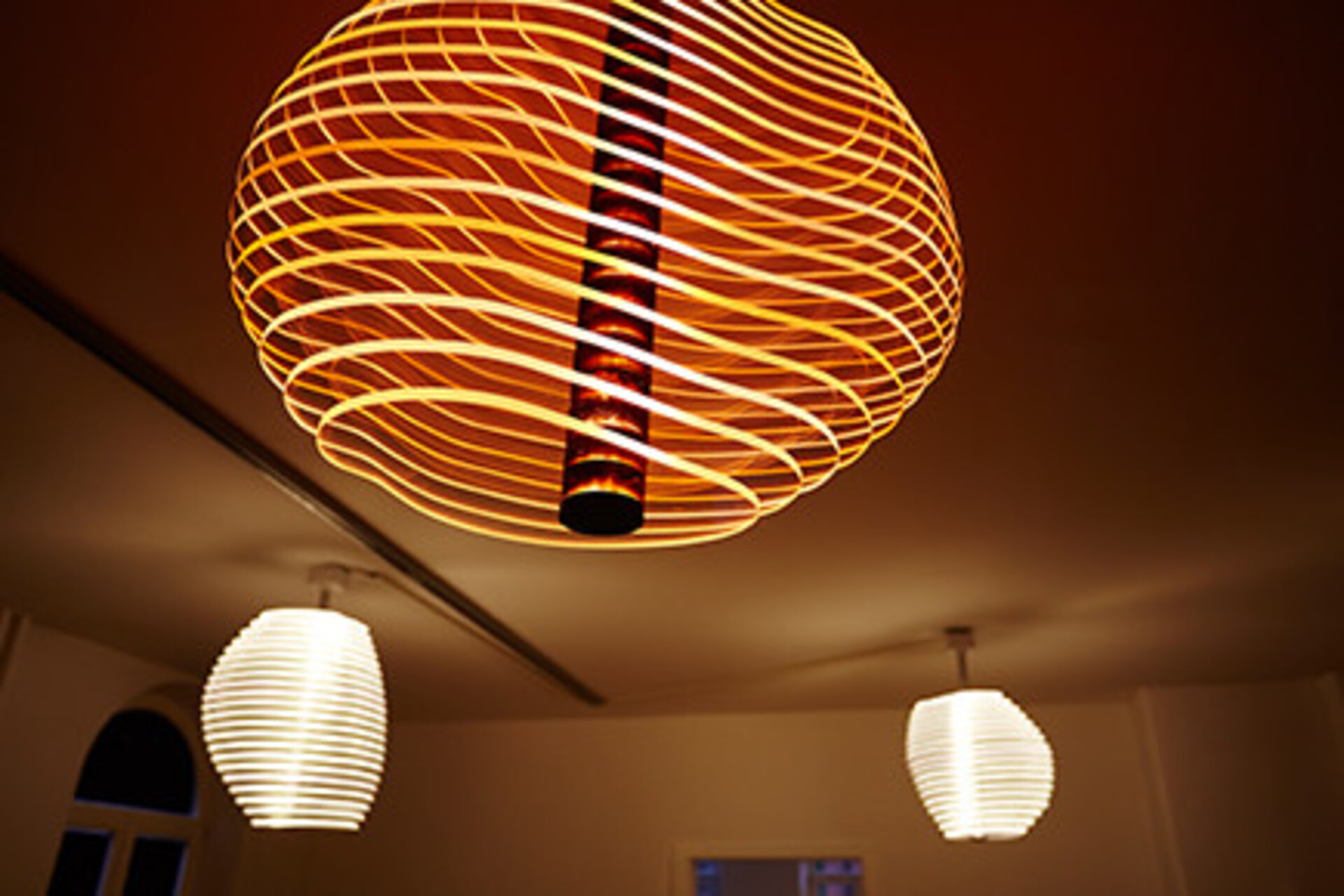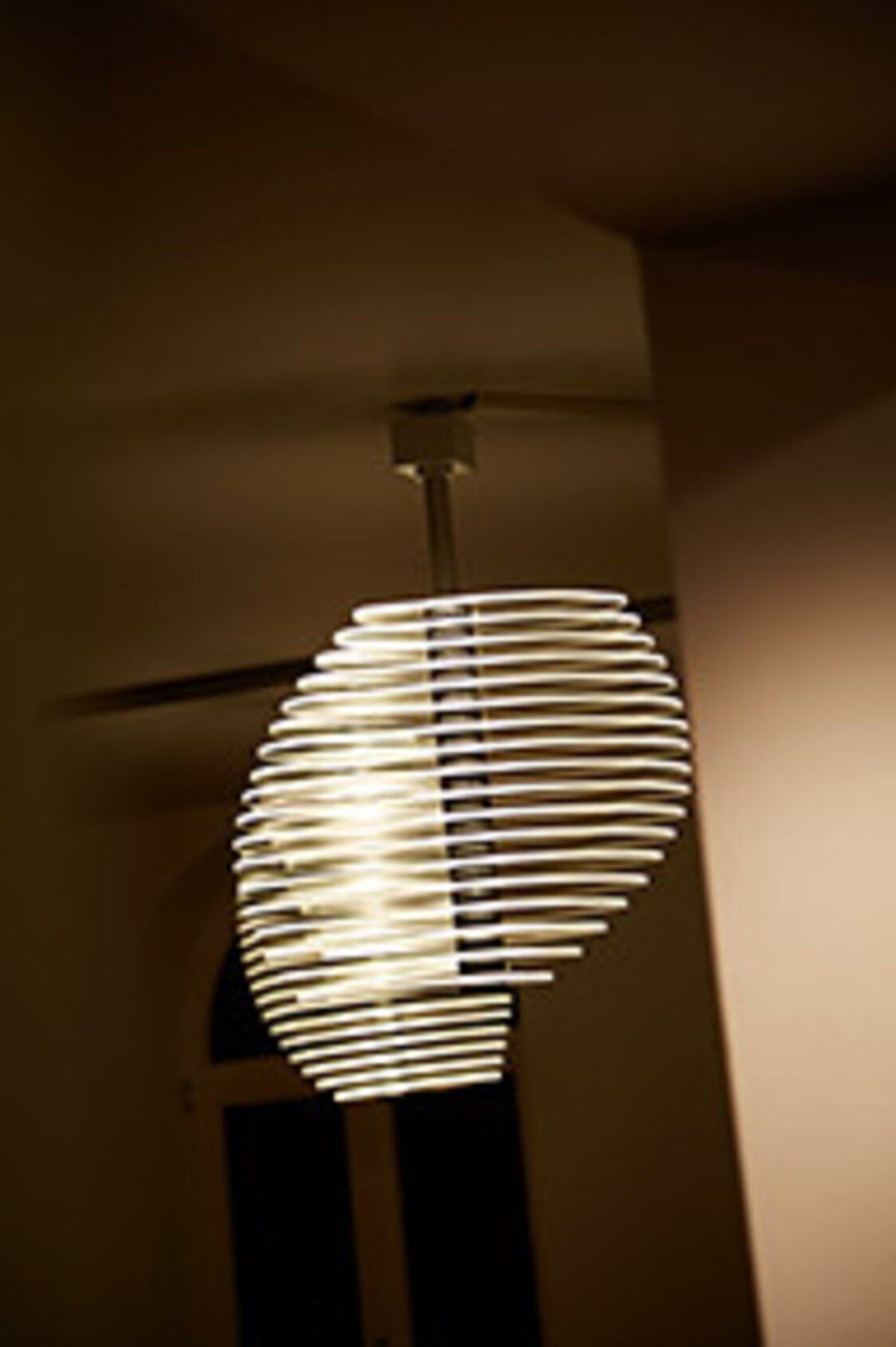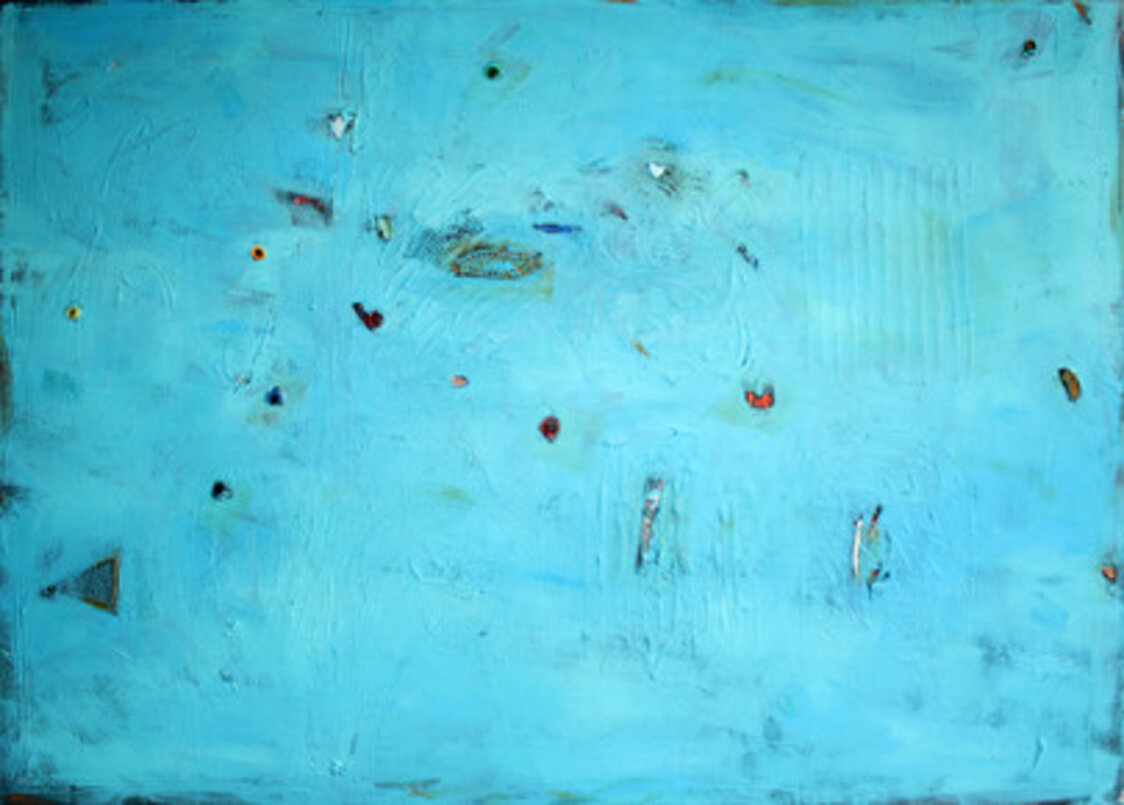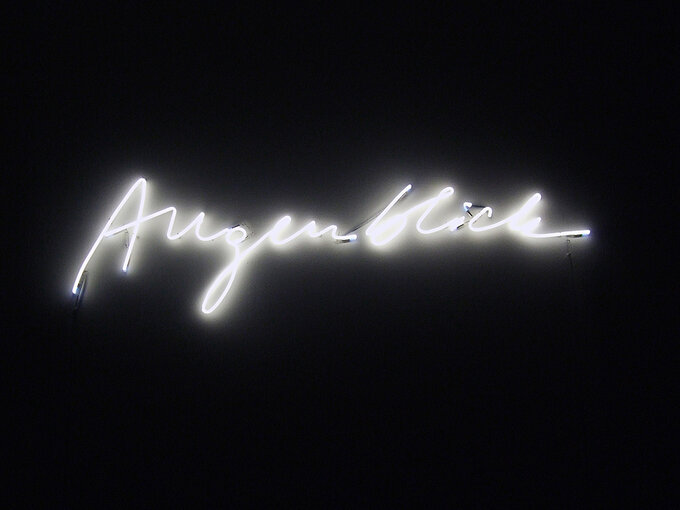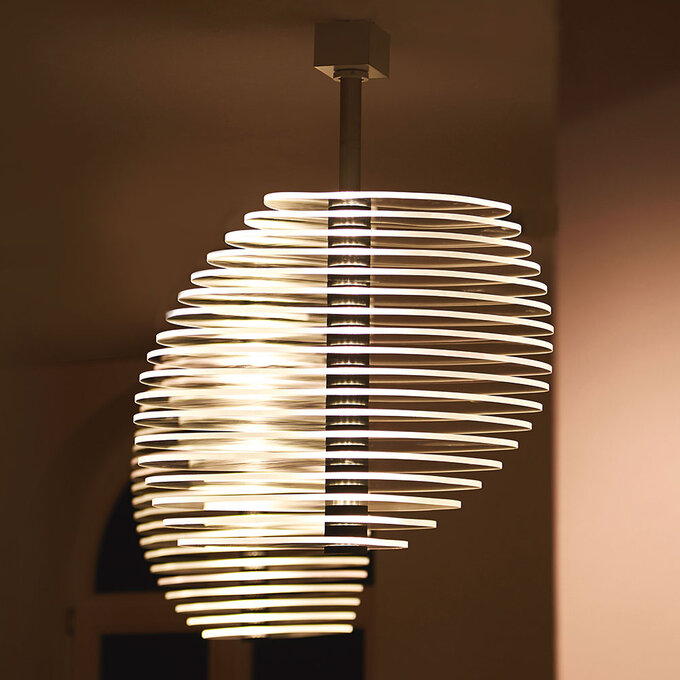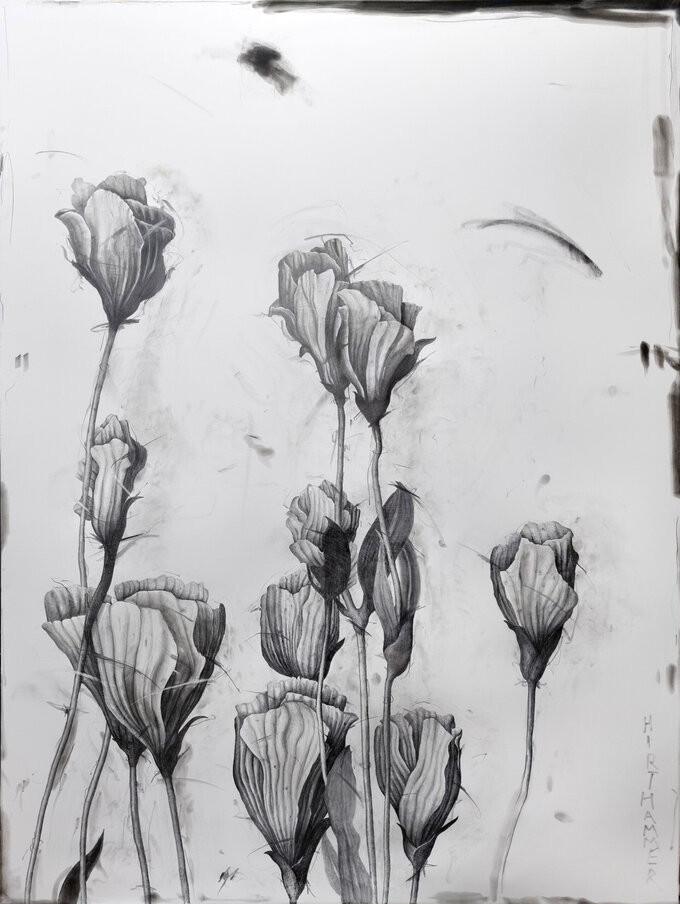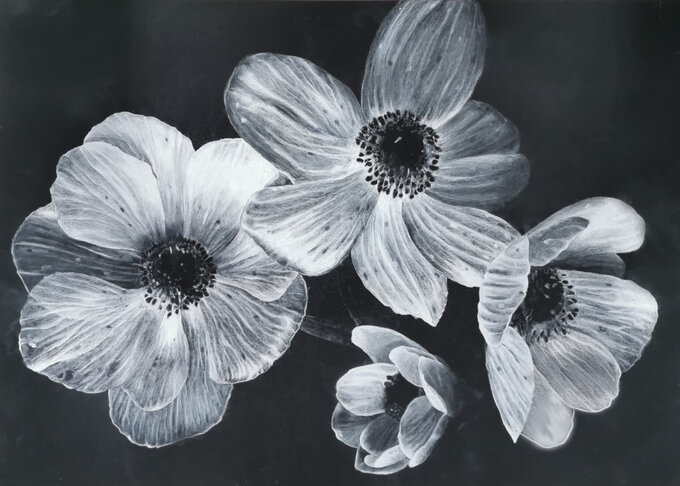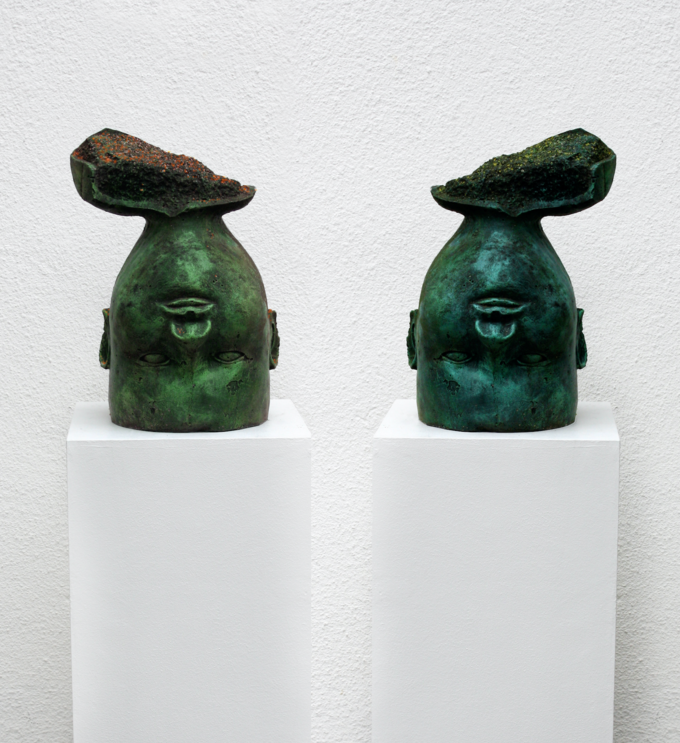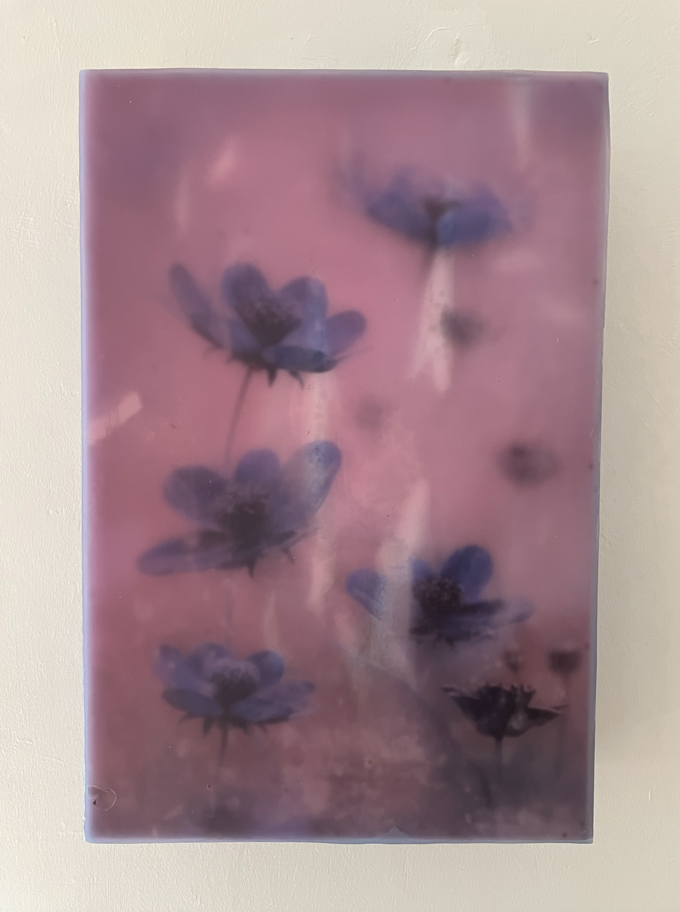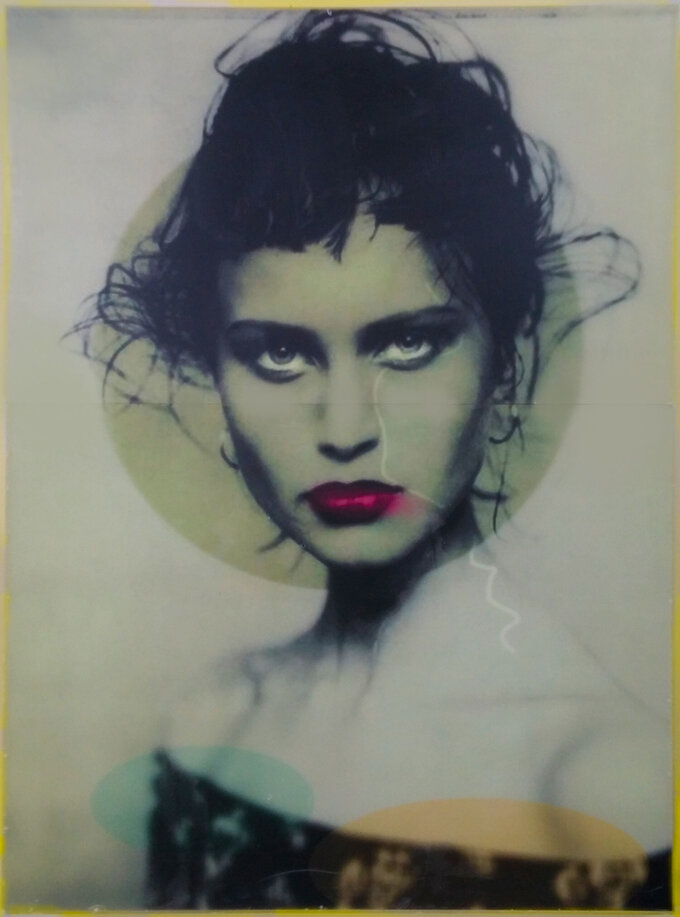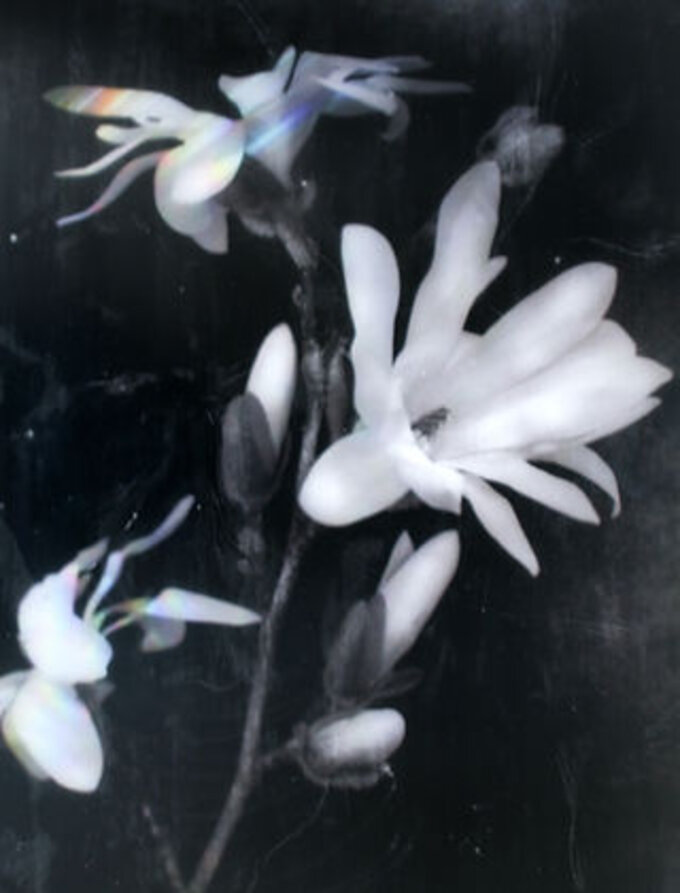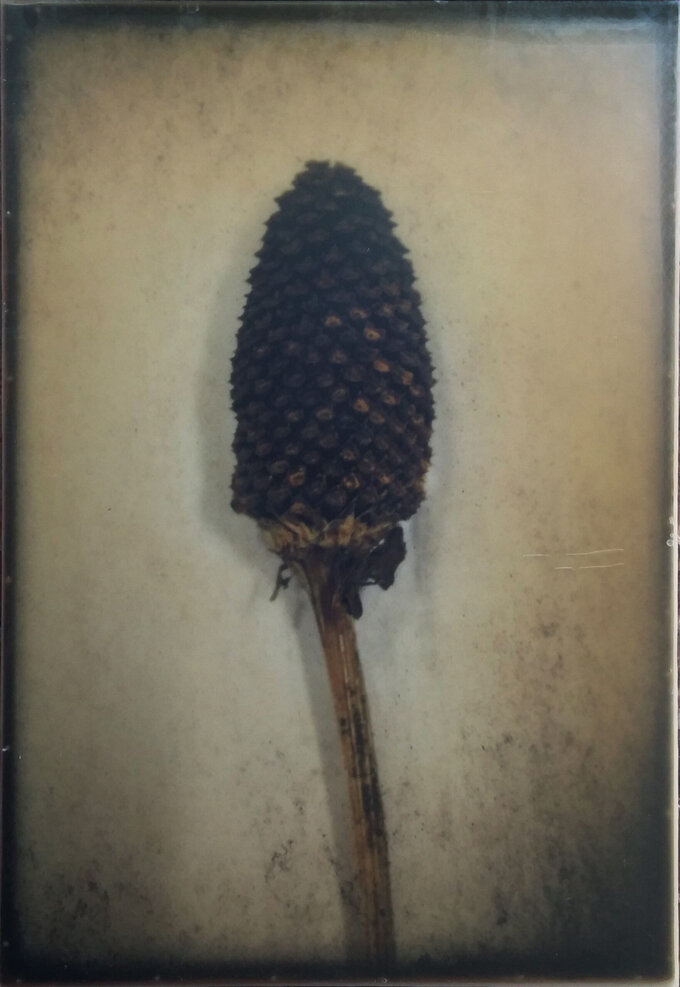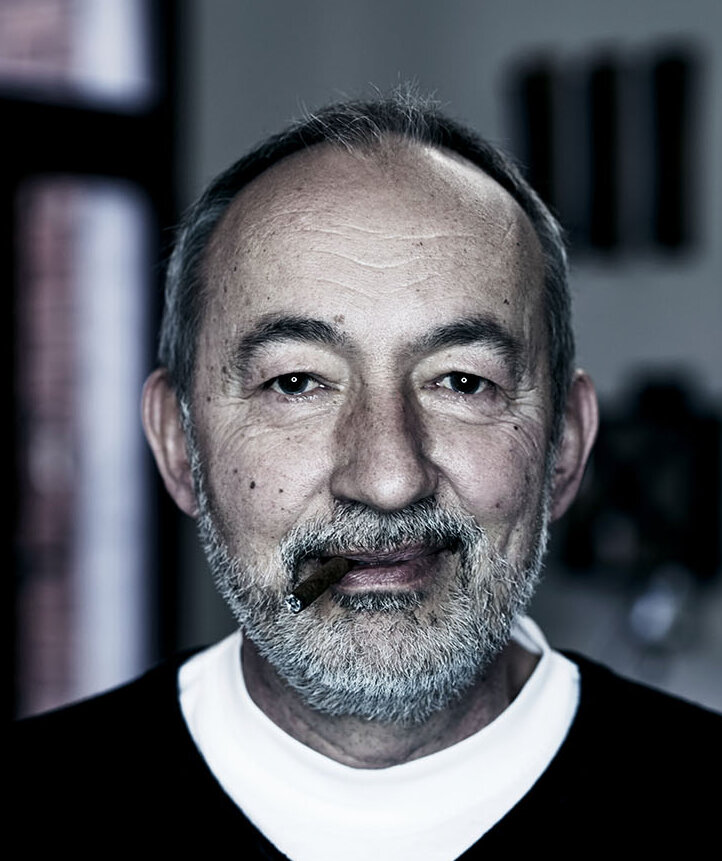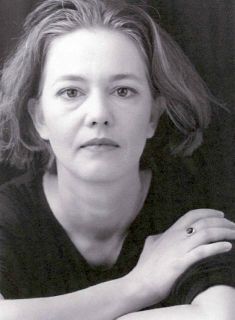Light and Color belong together. They’re like the chicken and the egg. But the famous question as to which came first – the chicken or the egg - isn’t being asked. No, the color is the egg which wouldn’t exist without the chicken, the light. With a prism we can diffract the white light of the sun into a multitude of colors with the rods and cones on our retina being responsible for the sensory perception of light and color. In this respect the exhibition motto is correct, with light preceding color.
Gunda Förster und Josef Hirthammer stand for the one and for the other. But not each of them necessarily stands for the two of them together to the same extent, equally for light as for color. That is why I shall not even attempt to compare the two positions. Instead I shall comment on the one and then the other artistic position.
Let me begin with Josef Hirthammer simply because his position is more accessible, by which I mean it corresponds to patterns which are more familiar. Here we have paintings on canvas, for example, something directly, unproblematically, associated with art.
Josef Hirthammer was born in Bad Reichenhall in 1951; however Franconia has been his home for many years. If you were to see all the things he produces, then you might question my assertion that his work is more accessible. You would see photography and so-called digital painting, object art and sculptures, representational art and figural art and highly abstract art, art depicting nature and gestural painting. We, the public, quite enjoy an artist who stands for a classifiable statement – for a material, a genre, an artistic direction. However, as we know, the artistic does not represent one particular medium intrinsically. Rather, the artistic seeks its own suitable medium. Josef Hirthammer has a big artistic Ego. And he has no desire to be bored with his own work. Both factors together are the main reason why throughout his life he has again and again been on the lookout for new media –hence, there is his sculptural work, his work with and on nature, his work with concrete and wax, his work with acrylic paint and the canvas, figurativism, narration or free experimentation.
His current exhibition is an ensemble of non-representational pictures in which he delights in playing with and using color. We have to engage with his paintings without the aid of informative titles. The only thing that helps is our visual empathy: Then we can see for ourselves how the colors in his paintings dance, interact and enhance each other.
For example, the picture entitled “Gray with Structure” isn’t gray. The canvas, which is lighter and unprimed, appears like highlights of color in a warm gray ground, but glinting through everything there are tiny sprinklings of red, red-orange, yellow and yellow-green.
The green picture (No. 24) is not monochrome. A relieflike structure of crimson dots, like remnants of Braille, sits at the center of the small format. The reason for this is that the color is worked into the canvas from behind. Subtly, finely, Hirthammer goes beyond the flat, two-dimensional primed canvas.
By contrast a structure has been etched into the red-orange color of the other almost monochrome picture(No. 41), I assume with the handle of the brush, which reveals the blue pigment beneath, a complimentary hue.
The pictures painted in 2013, 2014, and 2015 play with our perception in different ways: These are the bright sprinklings inserted into the picture, seemingly lying on the uppermost surface, but which in fact derive from the colors of the ground. The relieflike surface is not the uppermost paint layer, but was rubbed into the canvas from behind. On the other hand, there are examples of small blobs of saturated, pastose pigment which lie on the neo-Tachist painting as if a packet of Smarties had fallen onto the wet canvas. With great surprise one learns from the artist with regard to other pictures that the coloration of the color fields, which in some cases organize a surface in a loose sequence, is derived from the systematic examination of dead wild flowers from which he has produced a color scale.
Hirthammer is not a painter who builds up a system which he then follows picture for picture and patiently plays through for years on end. For him the canvas is his action space. And with constantly changing variations he allows the viewer to experience the colors, their modulation and interaction. Thus he turns canvases into centers of energy which flash and shine and invite us to “taste” them with our eyes. The viewing space is the square formed by the canvas, the visual field, on the other hand, is the color. The color is always accompanied by other colors. In this way he makes the canvas, the support, vibrate, which for him becomes something like a prism. Hirthammer shows us varieties of gestural abstraction with the colors acting as the children of light. Or formulating it differently: chromatic painting is for Josef Hirthammer the basis for living out his creative playfulness, unfettered and carefree.
The small concrete steles ending in wax function as contrastive elements: the hard material is topped by something soft. Cast in one and the same mold the one moves seamlessly but irregularly into the other, and the gray of the post begins to shimmer with color in the upper third as if it had been touched by a magician’s wand and make us witnesses of a transformation from heavy to light, from the colorless gray to the colorful. For the artist the materials also have a symbolic significance. Concrete is used to signify progress, desired by man and controlled by man; wax, in contrast, stands for unpredictable, changeable nature.
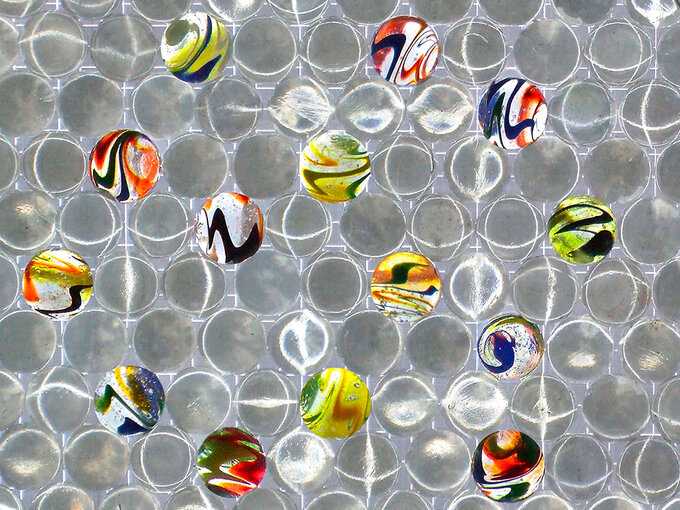
Gunda Förster
MURMELN – LEUCHTKASTEN #8
LED light box each light box approx. 1,500 pieces marbles diameter of marbles = 2.5 cm
90 x 90 x 9 cm
€ 8.000,00
Let us leave the colorful and go to light as the point of departure, which as artificial light installations stand at the very center of Gunda Förster’s artistic work:
Gunda Förster was born in East Berlin in 1967. She still lives in Berlin. As of this year she has held the Professorship of Art for Architecture and Design at the University of Applied Sciences in Wismar [1]. The keyword Art and Design, a virulent subject here in Nuremberg with the Museum for Art and Design, makes us prick up our ears. There are book titles which celebrate the crossing of boundaries with the title “Art and Design: An Affair”, others formulate it more harshly “Design is not Art”.
But no matter - with the term Design we have reached the first and at the same time most recent work, the three light objects made of layered acrylic glass. Perhaps we have to squint a little, to unfocus our eyes to guess where these forms come from. The light objects have the form of soap bubbles, those fascinating objects from our childhood days. The soap bubble, absolutely elusive, is held captive in the acrylic glass object permanently, its essential short lifespan lengthened virtually to infinity. The artist says in a statement about this work that in a time of permanent “boundary crossing” among the genres of architecture, design and visual art it is primarily the context which decides how something is perceived. She writes: “Design or Architecture in the context of art is perceived as art whereas art in applied art is seen as design.”
Gunda Förster spent a great deal of time in the 1990’s originally investigating the theme of “Painting after Painting”, reflecting on the various media with which the artist, moving on from classical panel painting, can be a representative of a painting tradition, in other words painting without a brush and stretcher. However, she became known above all as a media artist with large-scale light installations, using fluorescent tubes to create atmospheres, or rather atmospheric spaces. One of her most recent works (from 2012) is a permanent installation in an underground tunnel linking two parliamentary buildings in Berlin, with the simple title “Tunnel”. Neon light tubes are arranged at irregular distances like gateways. These emit a sun-yellow light and turn a purely functional feature into something akin to a stage or a quasi-horizontal set of steps in a variety theater show. The dreariness of the windowless space is transformed by the festive light. The interesting thing is that light can change something without destroying it – anyone who wants to return to the dreariness of the underground passageway need only turn off the neon tube installation.
Here in the exhibition Gunda Förster shows two pairings of video and neon lighting, qua neon light object: once with the contrast of the illuminated lettering Augenblick (Moment) and a loop with the title “emerge”, and, in another instance, the contrast of the word Magie (Magic) and a loop with the title “Drops“ (raindrops). The four individual works, produced in different years, interlock.
The word Augenblick just like the word Magie has poetic associations. Concrete poetry, established 65 years ago primarily by Eugen Gomringer, has always worked with such facts. One only had to, as Gomringer did, write down and permutate the words “Tree-House-Child-Dog”, and before you knew it stories would pop up in the head of the reader. And what are the many things we think of when we read in someone’s handwriting (incidentally it is Gunda Förster’s handwriting) Augenblick (Moment) or Magie (Magic)? We think of Kairos, an Ancient Greek word meaning the right or opportune moment personified as a god, which we either seize or let pass. Possibly we think of encounters, poor in words but for that deeply emotional, face to face. With the word Magic we think of a healing touch or sleights of hand. And see here in the exhibition how apparently an unseen hand writes something illegible. We immediately recall the threatening “MENE, MENE, TEKEL, PARSIN”, which appears on the wall of the Royal Palace to King Belshazzar in the Old Testament. We never see whole letters in Förster’s loop “Emerge”, but only dancing elements of letters, rather like someone writing in the air with a flashlight. One can, if one concentrates really hard, read what is being written with light and which extinguishes almost in the same moment, but one doesn’t have to read it, says the artist. But I can tell you: The phrase (actually a poem) reads: “Timeless Light – Forgotten Images/Timeless Images – Forgotten Light”.
What happens when watching the video loop is what the permanent loop across from it is telling us, and yet again isn’t. The moment in time becomes frozen, but what is actually written down in order to last has gone in a split second. One work refers to the other, one work explains another.
When watching the loop “Drops”, the same mechanism takes over: Someone who looks at it patiently can see how for twenty minutes different raindrops fall against a pane of glass and run downwards. And with it there is the sound of rain. Although both, image as well as sound, somehow seem unreal, this is not an artificially generated computer sequence. It was only that the real recording was slightly stretched out. That this is less about rain as a physical phenomenon and far more about the experience of time, about personal, inner time, ought to be clear. Anyone who becomes drawn into the loop experiences the elongation of time, and his/her gaze loses focus while following the individual drops of water, and he/she becomes quiet as a result. One senses: Observation is contingent – one can follow the path taken by the droplets, one can follow all the droplets, but one doesn’t have to! And this contingent, observant watching acquires something magical. It is magical when the moment is stretched out of compressed time. This is as clear and paradoxical as Gunda Förster’s quoted words, which I found in one of her 2005 catalogs: “The only time I find myself is when I watch what I am not.”
